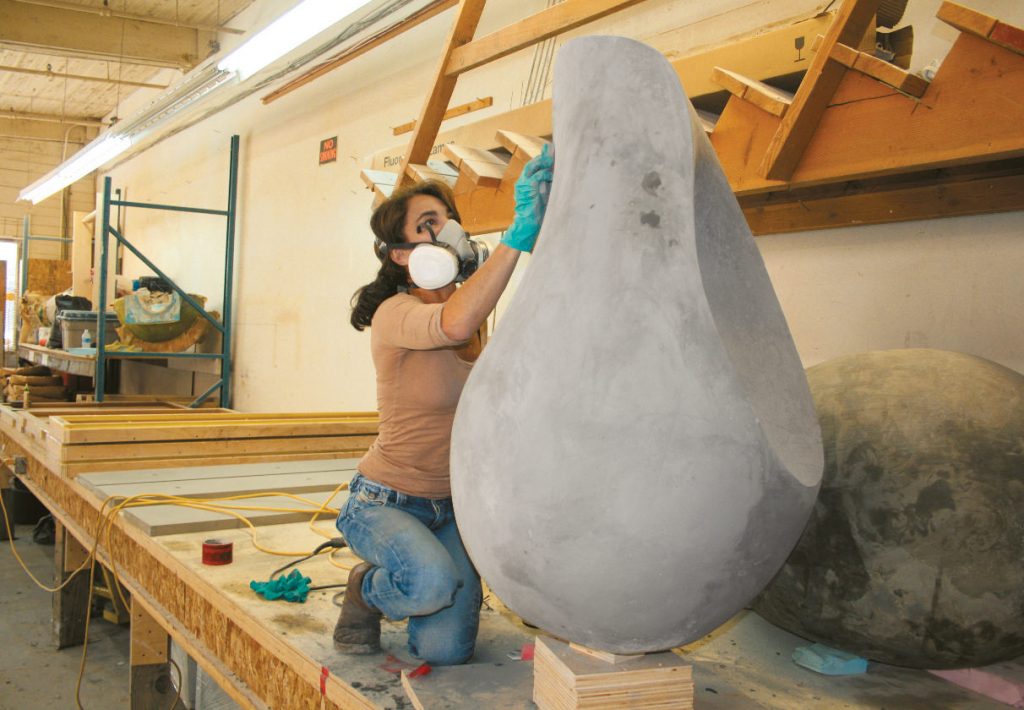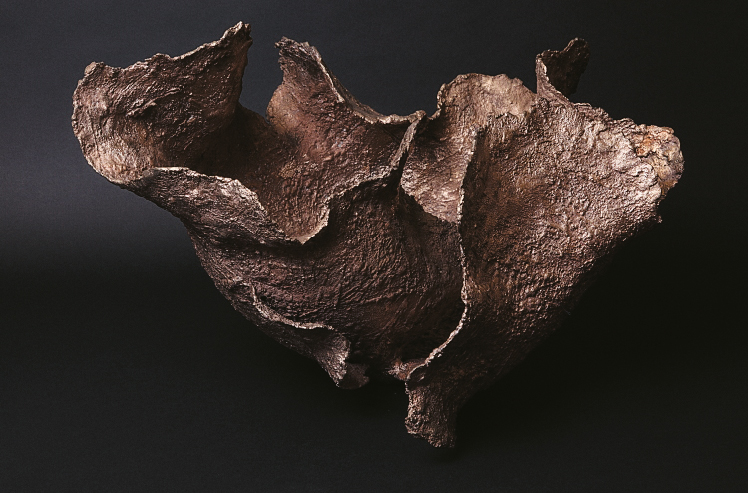As someone who has been fortunate to move in the same circles as many great local artists, I’ve seen my share of them leave Vancouver—and almost always for the same reason. They find Vancouver a difficult place to be an artist; not for the lack of culture or collectors or respected galleries, but because they feel, rightly or wrongly, that their work can only go so far here. What a delight then, to meet an artist who feels, and has found, the opposite to be true.
A former linguist who speaks five languages, Marie Khouri was born in Egypt, raised in Lebanon, and came to Vancouver by way of Paris, where she lived for over 25 years. During that time she completed her formal artistic training at l’Ecole du Louvre and les Ateliers du Louvre. Although Khouri was schooled in one of the most profoundly cultural cities in the world, it wasn’t until her arrival in Vancouver that her artistic career began to flourish.
As I talk with her in her studio and later inside her home, Khouri conveys the quiet pride of someone who truly loves her work. It’s rare to find an artist who embraces every part of her process, particularly when that process involves manipulating metal and concrete formations. In fact, it’s difficult to imagine this petite, sophisticated woman wielding anything other than a copy of the latest issue of Vogue. But here they are, pictures of Khouri working inside giant wax moulds, Khouri shaping concrete, Khouri pouring bronze. “It’s important for me to leave an imprint,” says the artist. “I am there throughout the entire process, and for me, that does change the piece.”
Khouri’s involvement with her process may explain the fast-paced progression of her artistic career. Her earliest pieces, while beautifully formed, lack some of the fluidity that her newest work conveys. This early work, which was sculpted in Paris, stays true to the human shapes and forms Khouri was instructed to create in class. Interestingly, it was upon arrival at the foundry at North Vancouver’s Capilano College that Khouri’s work came out of its shell, both figuratively and literally. In a body of work that Khouri refers to as her “Shadow” pieces, haunting images of morphed formations convey implicit emotions of anguish, joy, fear, depression and anxiety. The sculptures, which impressively capture negative space, are sculpted by Khouri out of wax and then cast in bronze. But because it is the negative space that is being captured, each cast is destroyed to reveal the shadow form within—as such, each piece is unique. The same process is employed in the later “Vessel” pieces, though these works feel more playful, particularly since they lack a defined base, allowing them to sway into place.
Khouri’s newest work is some of her most ambitious to date, both physically and visually. Crafted from concrete, the benches and teardrop-shaped sculptures she has been creating of late have not only gained her new collectors, but an interesting public forum for her work. “Vancouverites are not used to seeing art within the city,” says Khouri, “but why should it be that [art] is only for a few?” Newly installed at the Olympic Village Canada Line SkyTrain station, Khouri’s 3.5-metre Banc is a white concrete piece that’s aesthetic walks the line between conceptual art and modern design, but is at once both. Banc is the very latest work in Khouri’s “Concrete” series, of which she says, “I love the feel of concrete. It doesn’t have a timeframe and has such a contemporary feel.”
Some might argue that a five-ton block of concrete shouldn’t be considered art—it quickly became clear to Khouri that Cambie Street’s skateboarding community felt that way. Just 10 days after being placed in its new home, Khouri’s bench was all but destroyed by scratches and marks left from too many tricks played out on its gorgeous edges. Still, Khouri wouldn’t have it any other way. “Being an artist in Vancouver has given me opportunities that I could not have imagined.” Shortly after the announcement that Khouri would need to repair the damage with money from her own pocket, a wave of media attention surrounding Banc filled the pages of several Vancouver newspapers. “If anything,” says Khouri, “I am glad that the question of public art was raised and that the piece has brought awareness. Vancouver needs more public art—it needs to become part of everyone’s life.”
And so, Khouri has become an unlikely proponent for keeping the art in Vancouver in the eyes of the public. Let’s hope she’s here to stay.











